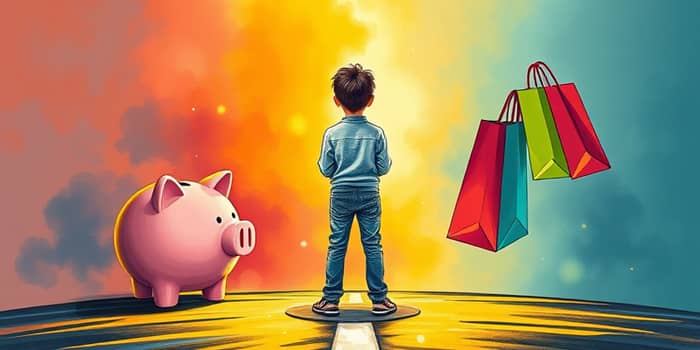
As the dust from pandemic restrictions settles, American households find themselves reshaping their financial priorities. The latest data reveal a clear shift: personal savings are shrinking while consumer spending rebounds.
The U.S. personal saving rate in May 2025 stood at 4.5%, down from 4.9% in April. This decline aligns with an ongoing downward trend that has seen rates dip to levels not seen since before the pandemic spike, raising questions about the resilience of household finances in the face of persistent inflation and rising living costs.
Personal saving rates in the United States have swung dramatically over the decades, reflecting economic cycles, policy shifts, and major global events. From the robust thrift of mid-century Americans to the lean buffers of the early 2000s, these fluctuations offer crucial lessons.
In the 1960s and 1970s, Americans saved an average of 11.7% of their disposable income, peaking at a remarkable 17.3% in May 1975. By July 2005, that rate had plummeted to an all-time low of 1.4%, a reflection of high consumer confidence and easy credit conditions that masked underlying vulnerabilities.
The Great Recession (2007–2009) prompted a rebound to an average of 4.1%, while the 2010s settled at a decade-long average of 6.1%. The COVID-19 crisis delivered an unprecedented anomaly: savings soared to 32.0% in April 2020, driven by lockdowns and government stimulus, before tapering to 25.9% by March 2021.
Several interlinked factors explain why savings rates have returned to pre-pandemic norms. Chief among them is the resumption of pent-up spending as consumers reengage with travel, dining, and entertainment.
During the pandemic, restrictions and health concerns curtailed many discretionary expenses, leading to an unprecedented buildup of financial buffers. As these restrictions lifted, households redirected their cash into experiences and goods they had deferred for years.
Simultaneously, inflation has eaten into purchasing power. Food, energy, and housing costs remain elevated, leaving families with narrower margins for saving. In May 2025, real disposable income fell by 0.7%, indicating that wage gains lag behind rising costs.
Despite the drop in savings, overall consumer outlays remained relatively stable in May, with total personal consumption expenditures decreasing by only 0.1%. Spending on goods declined slightly, but this was offset by a rise in services, underscoring a broader return to normalcy.
Many Americans have also shifted from bank deposits toward financial assets. Between 2019 and 2022, the share of assets held in stocks rose from 15.2% to 20.0%, suggesting households may view equity markets as more lucrative alternatives to low-yield savings accounts.
A lower savings rate can signify healthy consumer confidence in the short term, fueling economic growth through spending. Yet it also increases vulnerability to unexpected shocks—be it job loss, medical emergencies, or sudden rate hikes.
Economists watch personal saving rates closely as harbingers of recessions or sustained recoveries. Historically, prolonged periods of low savings have preceded downturns, as households exhaust their buffers and reduce spending sharply when stress emerges.
Moreover, diminished savings impedes long-term goals like retirement planning, homeownership, and education funding. Without adequate reserves, families face heightened financial insecurity and limited options during periods of distress.
Amid these challenges, there are practical steps individuals can take to rebuild financial resilience. Crafting a disciplined approach can gradually reverse the downward trend in savings.
Looking forward, sustained wage growth and easing inflation would provide the most direct path to higher personal savings. If real incomes recover, households may naturally rebuild their reserves.
Policymakers can also play a role by promoting financial literacy programs and incentives for retirement saving. Improving access to affordable housing and healthcare would reduce cost burdens, indirectly boosting the capacity to save.
Monetary policy decisions by the Federal Reserve—particularly around interest rates—will further influence the savings landscape. Elevated rates can increase returns on safe assets, encouraging more households to park funds in savings vehicles.
The decline in the U.S. personal saving rate from its pandemic peak reflects a rebalancing between deferred consumption and financial prudence. While spirited spending drives economic momentum, it also chips away at the buffers that shield families from adversity.
By understanding the historical context and current drivers of this trend, individuals and policymakers can take informed steps to fortify financial stability. Through targeted strategies and supportive policies, it is possible to chart a course toward stronger savings and a more resilient economy.
References













